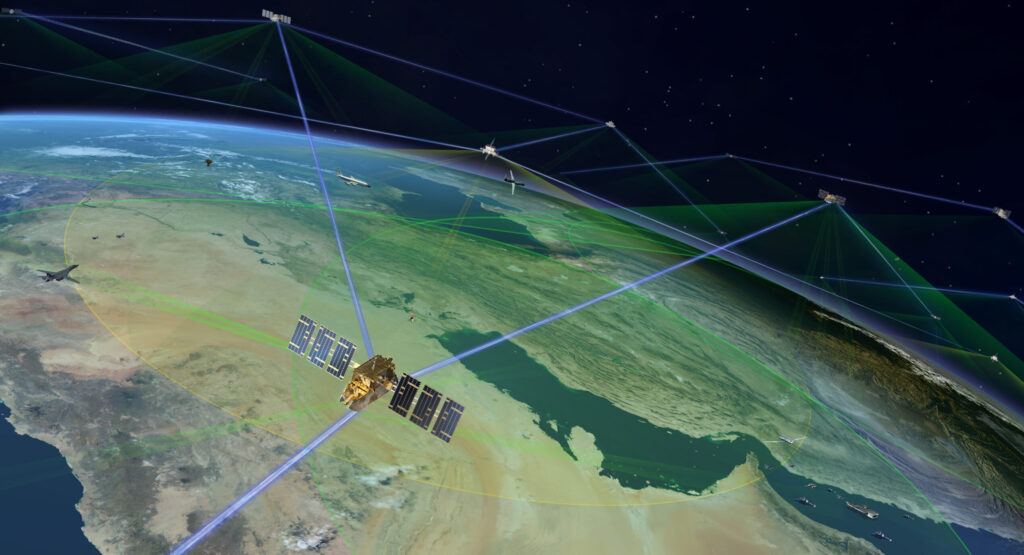
Northrop Grumman and Lockheed Martin each will supply 36 satellites for SDA’s Tranche 2 Transport Layer-Beta, which will begin launching in 2026. (Photo Credit: Northrop Grumman)
WASHINGTON — In its latest round of contracting to flesh out a new data relay constellation in low Earth orbit (LEO), the Space Development Agency (SDA) has awarded Northrop Grumman and Lockheed Martin a total of $1.5 billion to build and operate 72 satellites, the agency announced today.
The satellites, to begin launching in September 2026 according to the SDA release, will be part of SDA’s planned mesh network of up to some 300 interlinked satellites for high speed, low latency (i.e. minimal delay) data transmission and communications called the Transport Layer. The award to Northrop Grumman Space Systems has a total value of approximately $733 million; the Lockheed Martin award, approximately $816 million, the SDA release said.
Specifically, each of the defense behemoths will be responsible for 36 satellites comprising what SDA calls the “Beta variant” of the Transport Layer’s Tranche 2, which when completed will allow the network to be accessed anywhere on the globe. The Beta satellites will carry optical intersatellite links for cross-satellite communications and a UHF Tactical Satellite Communications (TacSATCOM) downlink for tactical users. (There are two other variants planned for Tranche 2, called “Alpha” and “Gamma,” each with slightly different downlink configurations.)
The Transport Layer satellites are being designed to play a key role in the Pentagon’s ambitious Joint All Domain Command and Control (JADC2) plan to seamlessly link military sensors to “shooters” on the ground, at sea, in the air, across cyberspace and, if not at this moment, eventually in space. The Transport Layer, in turn, is part of a larger SDA roadmap for utilizing LEO for various on-orbit missions called the Proliferated Warfighter Space Architecture (PWSA), designed to flummox enemy attacks by making targeting much more difficult through the tyranny of numbers.
Northrop, Lockheed and start-up York Space Systems all won shares of a $1.8 billion contract award in February 2022 for work on a previous set of 128 Transport Layer satellites. Those satellites, expected to be launched in 2024, will be the first operational data relay constellation for SDA and will provide what the agency calls “regional persistency” — meaning they can be “turned on” to transmit data over one theater at a time. They are expected to begin operations in 2025, before any of the Tranche 2 satellites is on orbit.
Lockheed Martin and York also back in July 2020 won SDA contracts to each build a set of 10 satellites for the very first set of test satellites for the Transport Layer, called Tranche 0. Lockheed Martin’s contract was worth $187.5 million; York’s, $94 million.
All totalled, SDA up to now has awarded nearly $4.5 billion for the Transport Layer.
In its own press release today, Northrop Grumman explained that their Tranche 2 Transport Layer Beta satellites in part will build on the designs the firm used for its 42 Tranche 1 Transport Layer birds, adding “new broadcast and tactical waveforms improving the capabilities of the overall PWSA.”
Lockheed Martin noted in its release announcing the award that the company now has won contracts for a total of 88 SDA Transport Layer satellites, and that the firm has recently opened a processing center for assembly, integration, and testing of smallsats including the Tranche 1 and 2 Transport Layer birds.






















